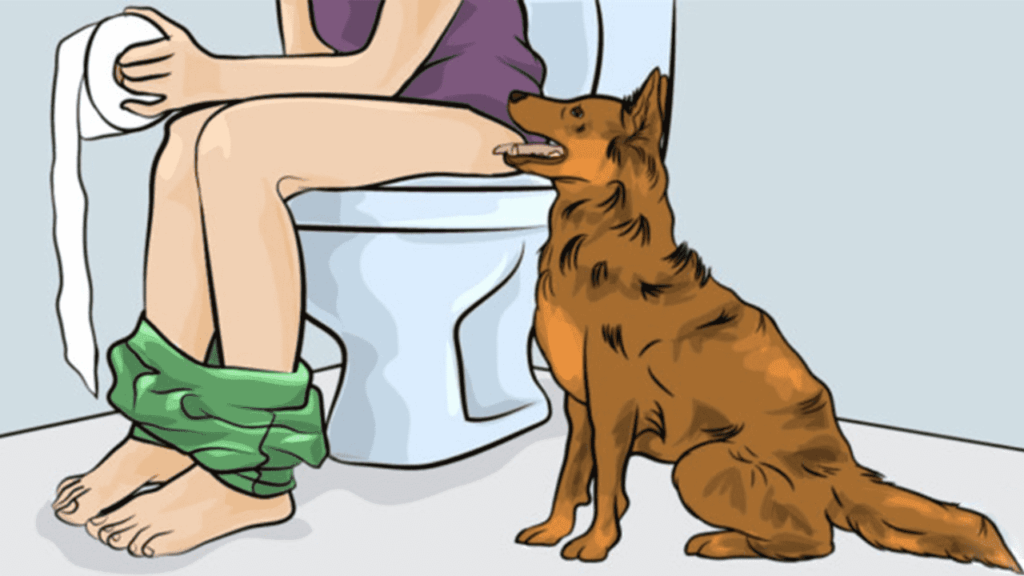How to Deal with a Dog That Follows You Everywhere

Dogs are known for their loyalty and companionship, often forming strong bonds with their owners. However, some dogs take this attachment to the next level, following their owners everywhere. While this behavior can be endearing, it can also become problematic. Understanding why your dog behaves this way and learning how to manage it is crucial for both your well-being and your dog’s happiness.
Why Dogs Follow Their Owners Everywhere
Natural Instincts
Dogs are pack animals by nature. In the wild, they would follow the pack leader for safety and food. This instinctual behavior often translates to the domestic setting, where the owner becomes the dog’s pack leader.
Attachment and Bonding
Dogs form strong emotional bonds with their owners. This attachment can lead to a desire to be constantly near you, as it provides them with a sense of security and comfort.
Separation Anxiety
Separation anxiety is a common issue in dogs that manifests as excessive following behavior. Dogs with separation anxiety may become distressed when left alone, leading them to follow their owners closely to avoid being separated.
Boredom and Lack of Stimulation
Dogs that do not receive enough mental and physical stimulation may follow their owners out of boredom. This behavior is their way of seeking attention and interaction.
Fear and Insecurity
Some dogs follow their owners due to fear or insecurity. Changes in their environment, such as moving to a new home or the introduction of a new pet, can trigger this behavior.
Common Signs and Symptoms
Constant Following
The most obvious sign is your dog constantly following you from room to room. They may even try to follow you into the bathroom.
Pacing and Restlessness
Dogs that are anxious or overly attached may exhibit pacing and restlessness, especially when they cannot be near you.
Whining or Barking
Dogs that follow their owners everywhere may also vocalize their distress when separated, through whining or barking.
Destructive Behavior
In some cases, dogs may exhibit destructive behavior, such as chewing furniture or digging, when they cannot follow their owner.
Excessive Greeting
Dogs with this behavior may greet their owners excessively when they return home, jumping, barking, and showing heightened excitement.
Causes and Risk Factors
Breed Tendencies
Certain dog breeds are more prone to clingy behavior due to their genetic makeup. Breeds like German Shepherds, Border Collies, and Labrador Retrievers often exhibit strong attachment tendencies.
Early Life Experiences
Dogs that were not properly socialized during their early developmental stages may develop clingy behavior. Negative experiences, such as being abandoned or rehomed, can also contribute to this behavior.
Health Issues
Underlying health problems, such as cognitive dysfunction or pain, can cause dogs to seek constant companionship for comfort.
Environmental Changes
Significant changes in a dog’s environment, such as moving to a new home or the loss of a family member, can trigger anxiety and increase following behavior.
Diagnosis and Assessment
Veterinary Evaluation
A thorough veterinary evaluation is essential to rule out any medical issues that might be causing the behavior. This may include physical exams, blood tests, and neurological assessments.
Behavioral Assessment
A certified animal behaviorist can conduct a detailed assessment of your dog’s behavior to identify triggers and underlying causes. This involves observing the dog’s interactions and gathering a comprehensive history from the owner.
Owner’s Role
Owners play a crucial role in diagnosing and managing their dog’s behavior. Providing detailed information about the dog’s routine, environment, and changes in behavior is vital for accurate diagnosis and effective treatment.
Treatment Options
Behavioral Modification
Behavioral modification techniques can help reduce your dog’s excessive following behavior. These techniques include desensitization, counter-conditioning, and positive reinforcement training.
Environmental Enrichment
Providing your dog with ample mental and physical stimulation can reduce boredom and anxiety. This includes regular exercise, interactive toys, and puzzle feeders.
Training and Obedience Classes
Enrolling your dog in training and obedience classes can improve their confidence and reduce anxiety. Basic commands such as “stay” and “settle” can help manage following behavior.
Medication
In severe cases, medication may be prescribed to help manage anxiety and related behaviors. Consult with your veterinarian for appropriate options.
Professional Assistance
Seeking help from a professional dog trainer or behaviorist can provide tailored solutions and support in managing your dog’s behavior.
Preventive Measures

Early Socialization
Proper socialization during the early stages of your dog’s life can prevent many behavioral issues. Expose your dog to various environments, people, and other animals to build their confidence.
Routine and Consistency
Maintaining a consistent routine can help reduce anxiety in dogs. Regular feeding times, walks, and play sessions provide structure and predictability.
Alone Time Training
Gradually training your dog to be comfortable alone can prevent separation anxiety. Start with short periods and gradually increase the time they spend alone, rewarding calm behavior.
Create a Safe Space
Providing a safe and comfortable space for your dog can help them feel secure when they are alone. This could be a crate, a designated room, or a cozy corner with their favorite toys and bedding.
Positive Reinforcement
Use positive reinforcement to reward independent behavior. Encourage your dog to play with toys or relax in their space, and reward them for doing so.
Personal Stories and Case Studies
Case Study 1: Max, the Clingy Labrador
Max, a three-year-old Labrador, followed his owner everywhere, even to the bathroom. After a veterinary evaluation ruled out health issues, a behaviorist identified Max’s behavior as a result of boredom and lack of stimulation. By incorporating daily exercise, interactive toys, and training sessions, Max’s behavior improved significantly.
Case Study 2: Bella, the Anxious Beagle
Bella, a two-year-old Beagle, exhibited severe separation anxiety, causing her to follow her owner constantly. With the help of a professional trainer, Bella’s owner implemented a desensitization and counter-conditioning plan. Over time, Bella learned to be calm and relaxed when left alone, reducing her excessive following behavior.
Expert Insights
Dr. Jane Smith, Veterinarian
“Understanding the root cause of your dog’s behavior is crucial for effective management. Whether it’s due to anxiety, boredom, or attachment, addressing the underlying issue is key to helping your dog feel secure and content.”
Sarah Johnson, Certified Animal Behaviorist
“Behavioral modification and environmental enrichment are powerful tools in managing excessive following behavior. Consistency and patience are essential for successful outcomes.”
Conclusion
Dealing with a dog that follows you everywhere can be challenging, but with the right approach, it is manageable. Understanding the reasons behind the behavior, implementing effective training techniques, and seeking professional help when needed can lead to a happier and more independent dog. Remember, patience and consistency are vital in addressing this issue and improving your dog’s well-being.
